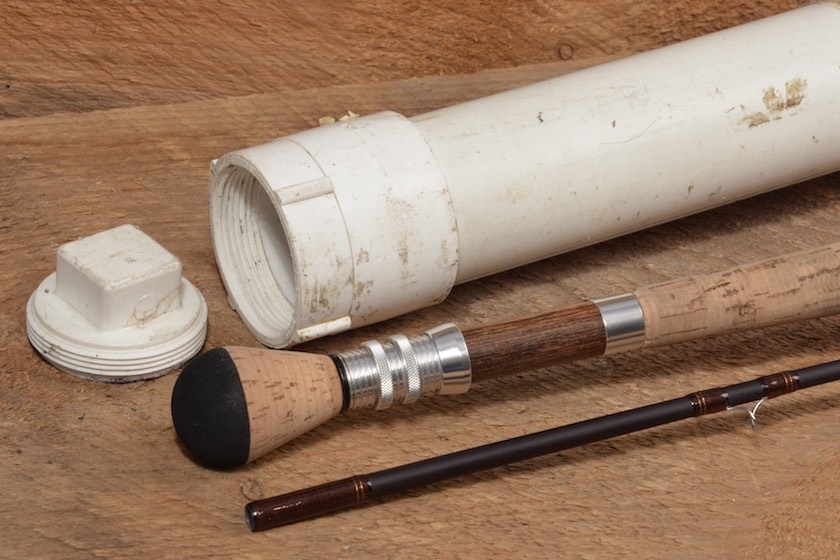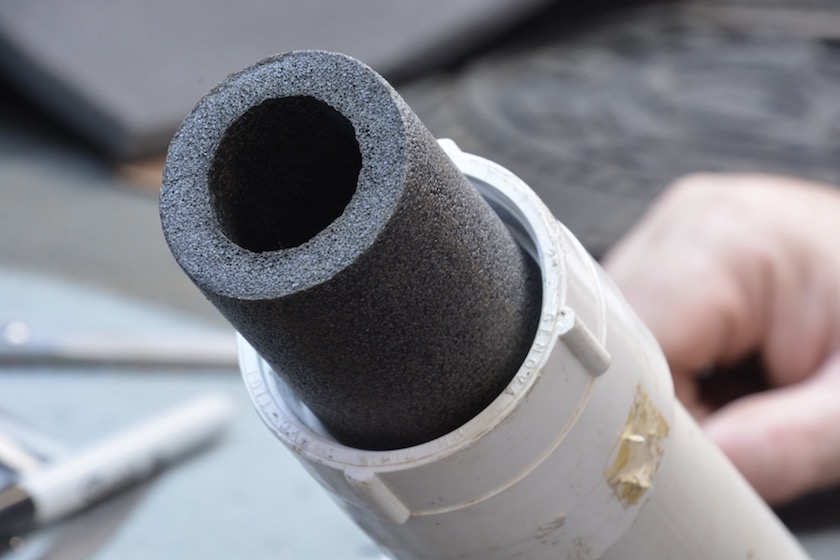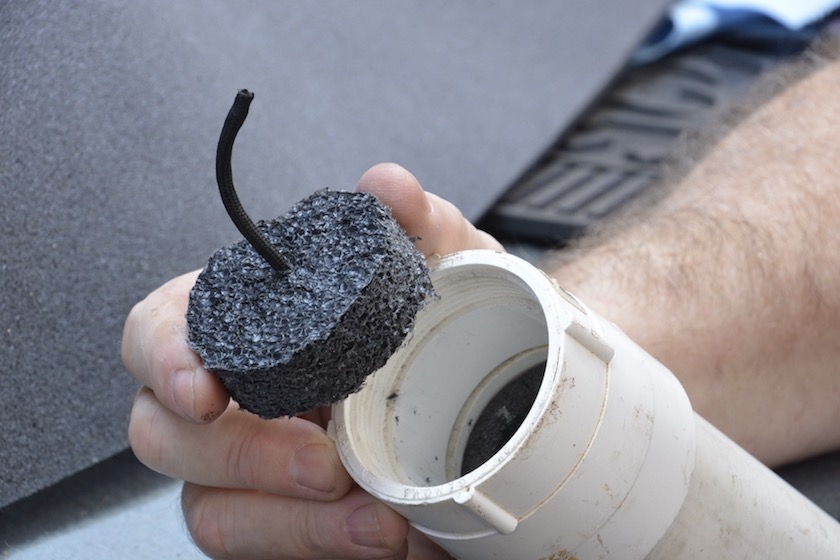
It may not be fancy, but a case made from PVC pipe keeps a rod safe and sound on the way to and from the water. (Photo by Bryce M. Towsley)
When the Otter splashed down on the remote Labrador lake, I was the poorest man exiting the door. I was there as a guest of the Labrador government to write about a new brook trout lodge.
The guys that had paid full price each cut a check that would have cleared the loan on my pickup truck. As they emptied the plane of all their fancy gear marked with expensive brand names, everybody had a good time laughing at my homemade rod cases.
When you are poor and rural, you improvise. Let them laugh; I knew my cases were a lot tougher than theirs.
A week earlier I was heading to the river to try a new fly rod I had picked up for the Labrador trip. When I arrived at the water, the tailgate was down and the rod was gone. I looked but couldn’t find it. I was about to sacrifice my next truck payment for a replacement rod when the phone rang. A woman down the road said her husband was mowing the high grass along the ditch on the edge of their property when he ran over my case.
“It’s pretty trashed,” she said. “Do you want me to throw it away?”
I retrieved the case before further damage could be done. It was beyond repair, but once I got it open, I was relieved to find the rod was fine. I quickly built another case, again being sure to put my contact info on it, and packed for my trip.
Making a fly-rod case like the one that survived the lawnmower is easy and inexpensive. First, gather the following materials. Two-inch pipe and fittings work well for most fly rods.
Materials
- Schedule 40 PVC pipe
- Threaded female adapter
- Threaded male plug
- Solid end cap
- PVC cement
- Foam pipe insulation
- Foam packing material

Step 1: Cut and Sand
Cut the pipe at least 2 inches longer than the rod sections, making sure the ends are square, and remove any burrs with sandpaper. Next, using medium-grit sandpaper, rough up the surfaces that will be glued, both on the outside of the pipe and inside the fittings.

Step 2: Glue the Ends
Try a dry fit to make sure the cap goes together well with the pipe. Take the pieces apart and glue with PVC cement as instructed on the can. (Some cements require a primer.)
Thread the male plug into the female adapter to make sure they fit together properly. Take them apart and repeat the gluing process on the open end of the pipe, using only the female adapter. Leave the plug out until the cement is cured.

Step 3: Pad It
Cut circles from foam padding, such as the kind used for packing material, that are slightly larger than the 2-inch pipe so they have a slip fit. Push them down the pipe with a broom handle until they lie flat against the end cap. I like the padding at the bottom of the case to be at least an inch thick, so you may need multiple pieces of material.
Foam pipe insulation is the greatest invention ever for DIY projects. I have it on my canoe racks, my treestand rails, and I have even seen it used to line the seat in an outhouse. For this project, the insulation goes inside the pipe. You will need insulation that has a 2-inch outside diameter with the largest inside diameter you can find. Mine has a 1 1/4-inch hole through it, which works fine with most fly rods. If the rod butt doesn’t fit, cut the foam a bit shorter so the butt is not inside the foam.
It’s best to place the rod sections in a segmented cloth wrap to help keep them from rubbing against one another and damaging their components. Put the rod inside the wrap and then insert it into the pipe insulation to make sure it fits.
Fill the pipe with insulation, leaving at least an inch open at the end. Make a foam plug to fill this space and pad the end. Using denser foam here works well as it’s easier to remove. Run a short cord through the foam to help pull out the plug.

Step 4: Dress It Up
If you are ashamed of the case’s homemade look, it’s easy to paint and add a few stickers. If you want a handle, duct tape and rope work well.
My rod made the trip to Labrador in its new case with no problems. Within 30 minutes of landing we were fishing the big river that emptied from the lake. When I arrived on the bank one of the guys was already fighting a 5-pound brook trout.
I put my rigged rod down and started taking photos while following him through the viewfinder. A few minutes into it, I took a step and heard a loud crunch. Before I even got a fly wet, my two-piece rod became a three-piece. Even a sturdy case can’t prevent bad luck.








































![Air gun 101: The differences between .177 & .22 – Which jobs they do best ? [Infographic]](https://airgunmaniac.com/wp-content/uploads/2020/09/g44-150x150.jpg)


